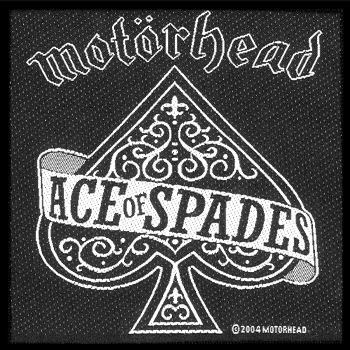The Waitakere coastal settlement where I live will not be the same as a result of Cyclone Gabrielle. Although we were fortunate to not suffer deaths or major injuries, many properties have been destroyed or damaged by slips and many people have been displaced, some permanently. The immediate (dare I say precipitant?) cause of the worst damage were slips caused by sodden hillsides, cliff faces and road verges along ridge lines. The rains in the large storm a couple of weeks ago were diluvial, and although the wind in Gabrielle was worst than in the previous storm, it was buffered by the Waitakere Ranges as it blew counter-clockwise Southeast to Southwest. Yet it brought more than enough rain to overload the saturated earth in a narrow valley with steep inclines and deep hollows and floodplains where tributary streams descend, then converge and empty onto the beach.
My homestead suffered no major damage because we are perched on the top of the valley at the headwaters with the house sited in a carved out North-facing bowl on a relatively flat section of land. We heard pine limbs falling on the roof the night of the storm but other than some erosion and cracks in the footpaths, we emerged unscathed. Below us it was devastation. Our road is cut off by a half a dozen major slips and is closed, with some of those slips covering the entire road width, dozens of meters long and impassable even by foot. We still have no power as poles and lines were downed by those slips and others. We did not have internet or cell phone coverage for over 30 hours because the local cell phone tower lost power and then ran out of backup battery power after 15 hours. Indeed, in their infinite wisdom Spark, who controls the tower, decided against installing a backup generator at the tower and resorted to a cheaper battery supply even though there are day-long+ power outages in this area two/three times per year. Since emergency crews rely on cell phone coverage and because landlines were discontinued by Spark when the wifi receivers/transmitters were installed on the tower a few years ago, the entire area was actually incommunicado and in the dark for those 30+ hours. Needless to say that impeded emergency response/disaster relief efforts.
That gets me to the point of this post. It is now very clear that the climate change chickens have come to roost if for no other reason then that rising sea temperatures create subtropical storm conditions that generate increased rainfall and wind speeds further South than in previous centuries. These storms are generated more frequently and unseasonably when compared to historical records. So Gabrielle is a storm of a new type, if you will, one born off of New Caledonia in summer that headed deep Southeast offshore of New Zealand on its way to the roaring 40s.
The storm rains that hit my valley were not from the Southwest, which is/was the prevailing wind. They were unusual, virtually non-existent, in the two decades that I have lived in the area. But in the last two years there have been several storms that came from the S/SE direction, with the last two being the fiercest.
But this post is just not about the consequences of climate change on coastal communities. It is also about yet more human folly. In the past half decade the population of my valley has quadrupled (at a minimum). What was once a valley sprinkled with hippies, poets, writers, artists, surfers, potheads (covering all of the previous categories) and the occasional celebrity or politician hiding from the public eye, has now become a commuter suburb full of bankers, hedge fund managers, assorted mid-level executives and for-profit wellness gurus who combine crystal gazing and anti-vaccination spiritual discovery with crude money-making schemes in ashrams and healing centres scattered in the bush. Behind the backs of the voting public and in violation of the Waitakere Heritage Protection Act, local council authorities quietly re-zoned parts of my valley so it could be sub-divided into smaller sections. These recently re-zoned areas lie on the floodplains at the bottoms of the valley but also along the upper reaches where people like me live on lifestyle blocks of 10-11 acres. When I bought my place in 1999 no sub-division of any sort was permitted on properties like mine and even the native vegetation was supposed to be regenerated if not being actively used as horse paddock or in silage.
Now, with the “tiny house” trend, the valley is full of container houses and shacks posing as tiny houses. There is supposed to be only one sub-division per property and it must be linked to the main house by a common driveway and have its own septic system. The truth, however, is that some lifestyle blocks now have several small dwellings on them complete with assorted types of plumbing and not always with independent self-contained septic systems (in other words, they are using long drops). This ia problem because the tributary streams that converge towards the bottom cannot cope with the effluent from dodgy septic systems and long drops. Rather than new home owners, these new dwellings are occupied by a legion of renters squeezed out of the Auckland rental market but also, in significant numbers, by AirBnB guests who pay exorbitant amounts for a few nights of “bush experience.” In particular, foreigners are suckers for both the wellness con artists as well as the AirBnB parasites. In any event the result is a proliferation of people way beyond what is ecologically sustainable in the valley. E coli measurements in what used to be pristine parts of the tributary stream system are stark proof of that.
The two roads in and out of the settlement have not been significantly upgraded since 1999 other than pothole and shoulder repairs but the volume of traffic has increased exponentially along with the population growth. Some of the newcomers are decent sorts, but along with them have come meth heads, boy racers and gangsters of various stripes. What once were two isolated roads where horses, runners, cyclists and children could transit peacefully are now at times rally courses, both at day and at night. The days of mellow hippies are loooong gone.
When Cyclone Gabrielle hit she took with her established batches dating back to the 1950s but also some of the new builds on the floodplain and on steep hillsides. This raises the issue of consenting, building inspections and, dare I say it, corruption in the building consent awarding process. I say this because somehow complaints against some of the most egregious violators of land use statutes repeatedly end up with nothing having being done to curb their offending and business being conducted as usual even though almost every honest local knows who the offenders are and what the nature of their offences happen to be. Local politicians are well aware of this offending but cast a blind eye. Many people attribute the proliferation of tiny houses to the need for housing and therefore a legitimate market response to that pressure, but as mentioned, much of the new housing is immediately listed as short term holiday rentals rather than long term accomodation.
I do not mean to imply that corruption is a serious problem here or anywhere else in NZ. But I suspect that it exists and is more prevalent than we acknowledge. I say this in part because I was once part of a Transparency International survey of the NZ intelligence services and military. The questionnaires were extensive and in-depth. I put much effort into my responses. Where the answers were numerical values from 1-5 (1 being bad, 5 being good), I did in fact rate some institutions with 2.5/3 rather than 5s because not everything our security communities do is righteous or correct (for example, I marked the NZSIS down for its misrepresentations and treatment of Ahmed Zaoui and the NZDF down for its slander of Jon Stephenson, something that eventually resulted in it losing a defamation court case with costly consequences for the NZ taxpayers). The numerical value as well as longer response questions covered a wide swathe of institutional practices, so to my mind having a few lower scores in amongst an otherwise positive overall assessment was to be expected, especially given the nature of the institutions under review. In fact, I would have thought it unusual for scores to be uniform across the board.
When the aggregate tabulations were published I was shocked to see that in the final version of the Transparency International report, the agencies that I was asked to evaluate in terms of honesty, transparency, professionalism, etc. were given straight 5s in every category. I asked around of other participants if I was an outlier and my results discarded as such but was told that no, there was at least one other participant who had given varying marks to the categories in the study, sometimes coincident with mine but other times not (we participants did not interact with each other until the report was published in order to preserve the integrity of the process). For whatever reason, Transparency International New Zealand decided to overlook the lower marks and give the NZDF and intelligence agencies the equivalent of straight “A”s.
We must remember that Transparency International is focused on the appearance of integrity, corruption, honesty or dishonesty, not the reality of it. That may be why Singapore and New Zealand always appear on the top of the Transparency International scales when it comes to honest governance when in fact, at least in the case of Singapore, nothing moves in the city-state without someone greasing the palms of the PAP regime. Perhaps in New Zealand we have a variation on the theme. Ours is a white collar or white glove type of corruption conducted by well-heeled and well-connected people in high places, unlike the vulgar street level corruption of officials in small island states and other underdeveloped countries with loose ethics and weak accountability systems that could otherwise serve as checks on personal and professional avarice. Among other actors, the PRC has understood this phenomenon very well and used it to its advantage when seeking political and economic benefit in such places–and perhaps New Zealand as well (reports of Chinese “influence operations” in NZ are well-substantiated and have exposed close ties between PRC-linked donors and various political parties).
The tragedy in all of this is that while storms are an independent variable that is not preventable, human agency serves as an intervening or intermediate variable than can make their impact (the dependent variable) better or worse. Human actions contributed to making things worse when it comes to the storm impact on my small community, but looking afar to the NZ East Coast, perhaps it had a similar impact there as well (think of the debris fields created by forestry “slash” practices, which contributed to the destruction of bridges and roadways as logjams were created by rain-fueled floodwaters and resulted i the death of one child).
I could go on offer a critique of neo-liberalist applications and market driven economics on public welfare at this point, but their negative impact is clear. Whatever the original rational for adopting monetarist fiscal policies and deconstructing the public sector so that private interests could promote “efficiency” in the delivery of formerly public services and the economy in general, we need the State “back in” because it is obvious that human agency is driven by things other than devotion to service and the common good. That has turned out to be sub-optimal from the standpoint of our collective welfare. The pandemic was the first obvious sign that a return to a more interventionist State was needed. The cyclones are now a confirmation of that necessity.
Put another way. The calamity that has befallen my lovely rural beach-focused community is the result of two conditions: human-induced climate change and human institutional and personal failures. Which as a bottom line reminds us of one thing: the levees of society are, for better and worse, man-made.





